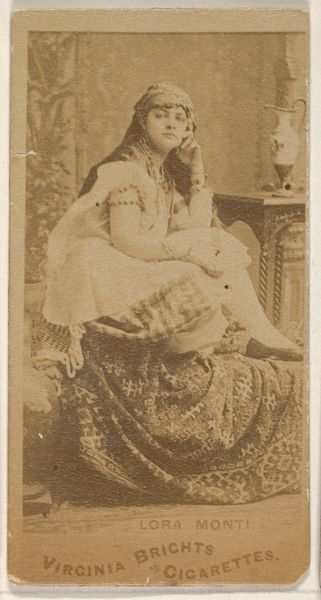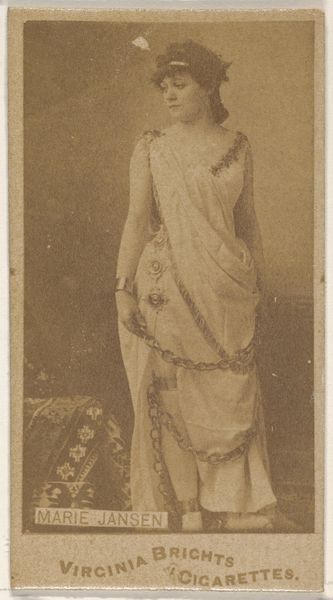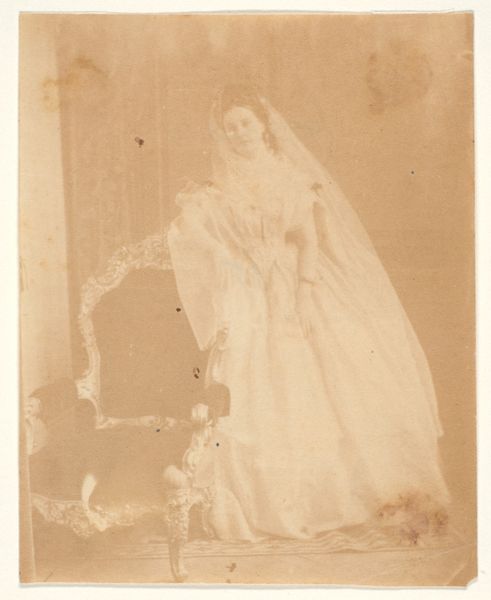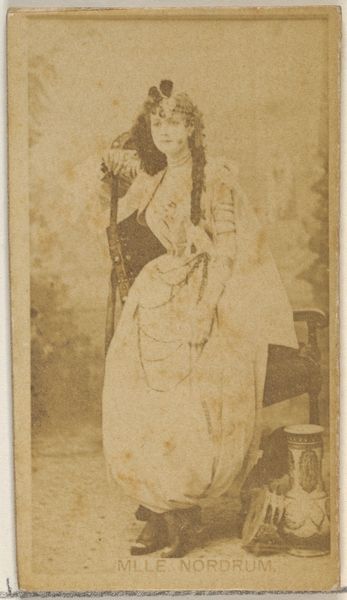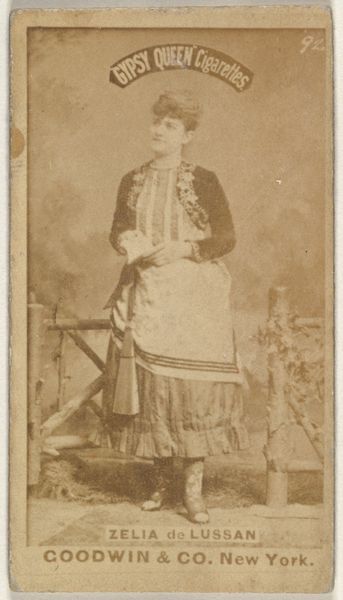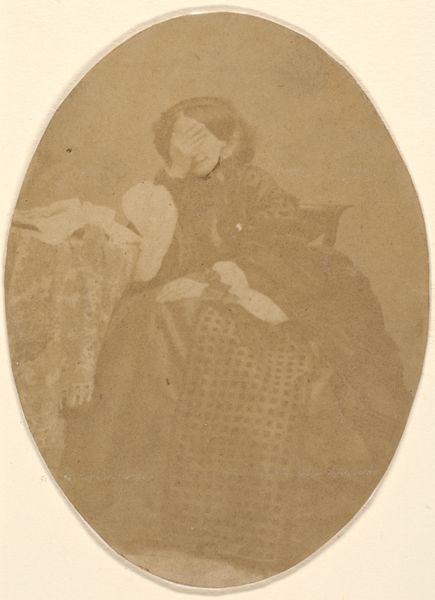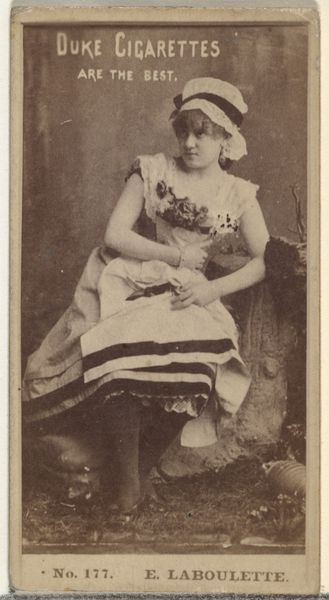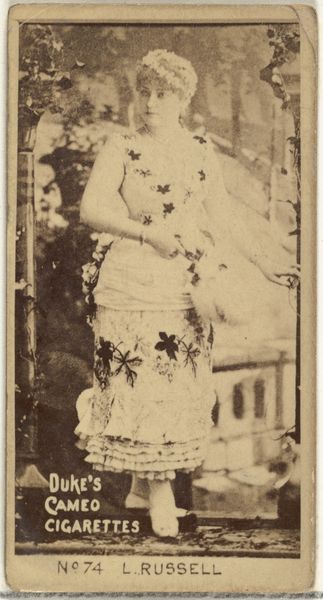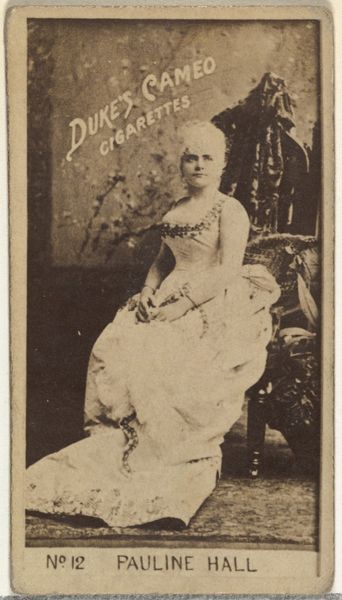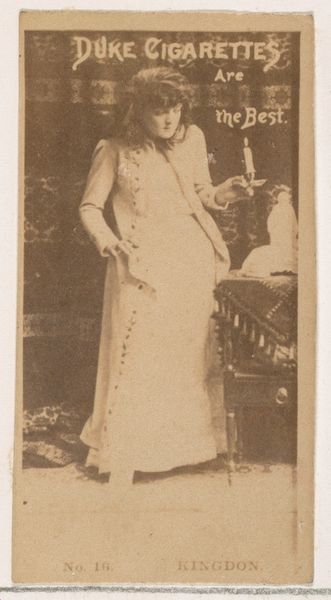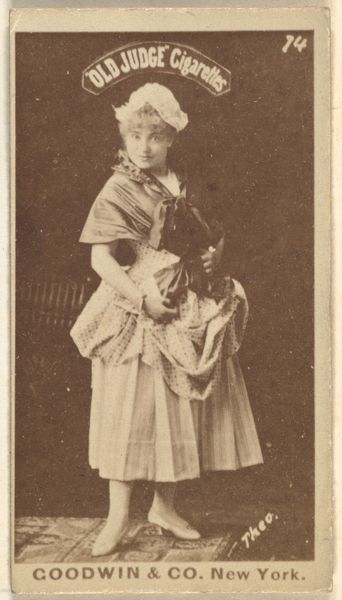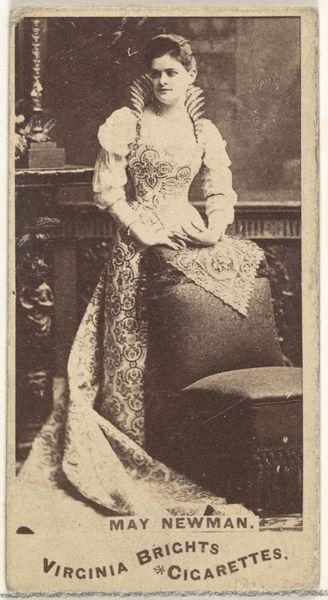
Dimensions: height 64 mm, width 49 mm
Copyright: Rijks Museum: Open Domain
Curator: This daguerreotype, created around 1855, is titled "Franse erotische stereofoto." It’s currently part of the Rijksmuseum collection and believed to be the work of Eduard Isaac Asser. What are your initial thoughts on this early photograph? Editor: Ethereal. The subdued tones and soft focus give it a dreamlike quality. You can almost feel the texture of her gown, though the erotic nature you mentioned seems rather subdued by today’s standards. Curator: Precisely. Eroticism in this era was often more about suggestion than blatant depiction. The cultural context is key. It circulated, presumably, amongst a small elite who had the money and the technology available. The rise of photography coincides with many debates about surveillance and the shifting boundaries between public and private. Editor: Which brings us to the technique itself: the daguerreotype. It’s a direct positive image, meaning no negative, each one unique. You have to think about the laborious process: polishing the silver-plated copper, sensitizing it with chemicals, and the lengthy exposure times required. It elevates it to a high-skill profession that only few had the privilege to practice. Curator: And to afford. Consider the sitter too: we see the soft lighting and idealized pose are very much in the tradition of Romantic portraiture, even though we now are viewing photography rather than painting. Editor: This single image also speaks volumes about consumption and desire during that era. Materials like silver, copper and the specialized knowledge to manipulate them into a photographic plate represent wealth and the rise of leisure, don't you think? The subtle allure almost becomes secondary. It represents the accumulation of both capital and a visual archive. Curator: It highlights how closely interwoven notions of sexuality, representation, and class really are, a constant throughout history and still in discussion now. Editor: Indeed. The materiality and context reveal an intimacy both produced and consumed. Curator: So a deceptively simple photograph actually holds within it layers of socio-cultural significance. Editor: Absolutely. This close examination unveils the labour and class politics.
Comments
No comments
Be the first to comment and join the conversation on the ultimate creative platform.
